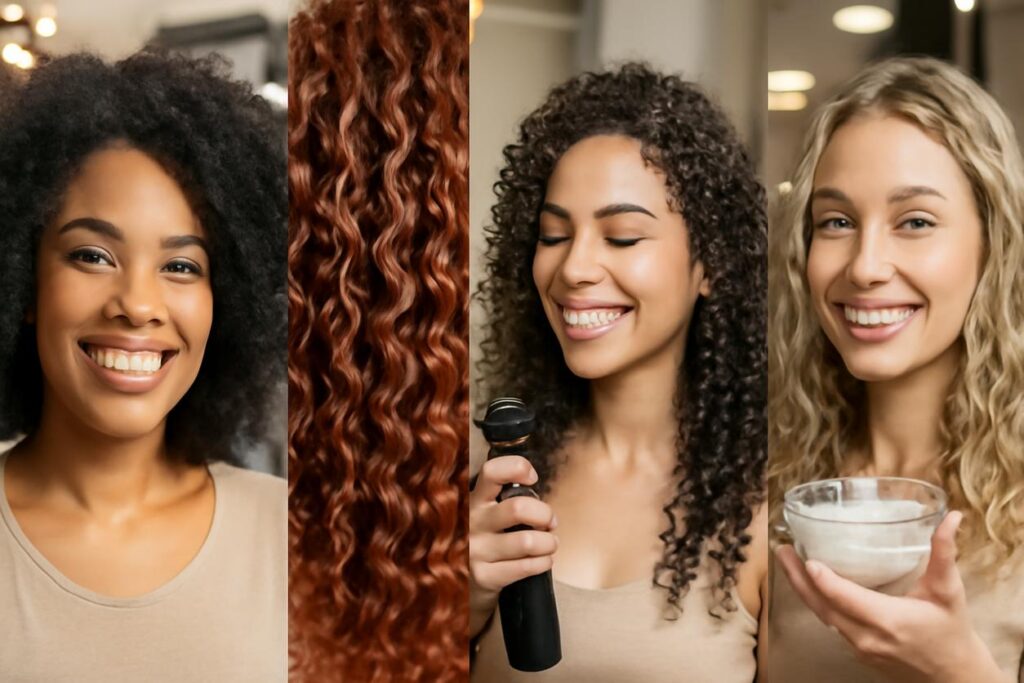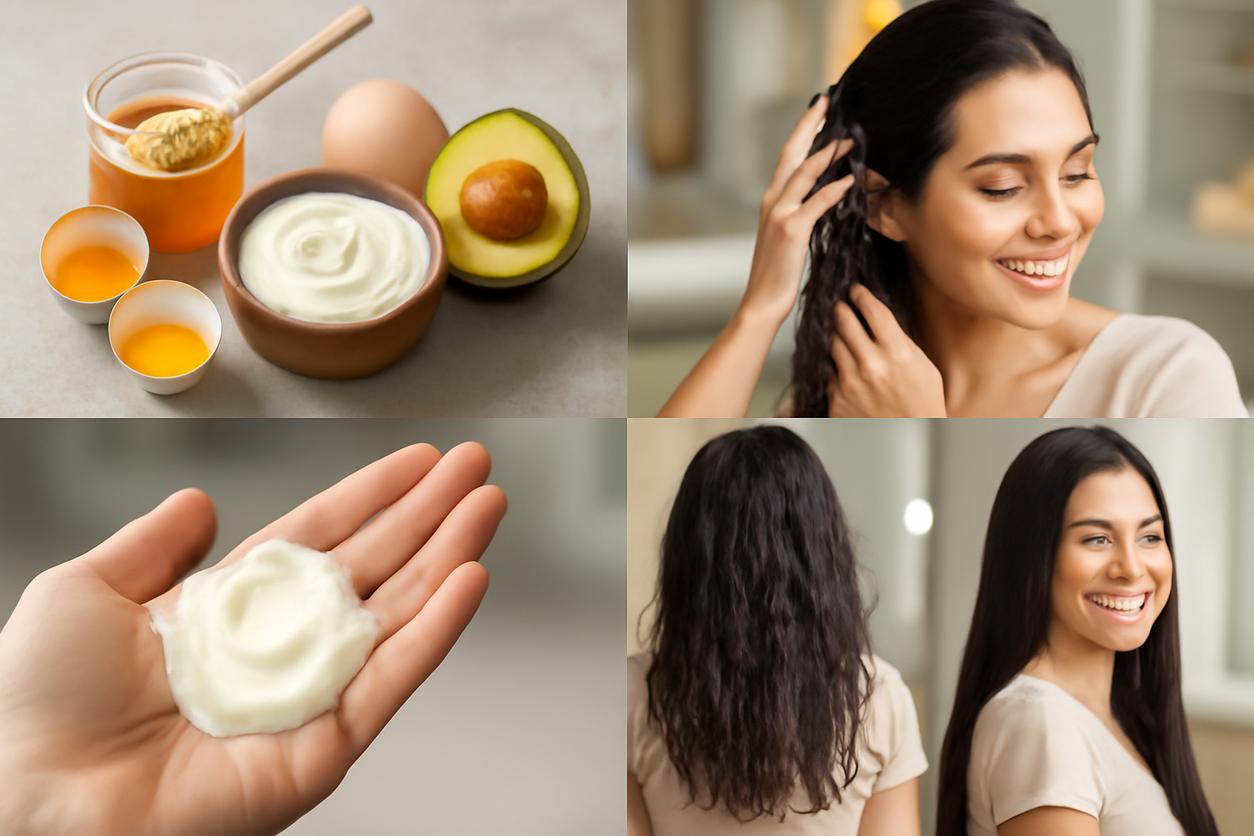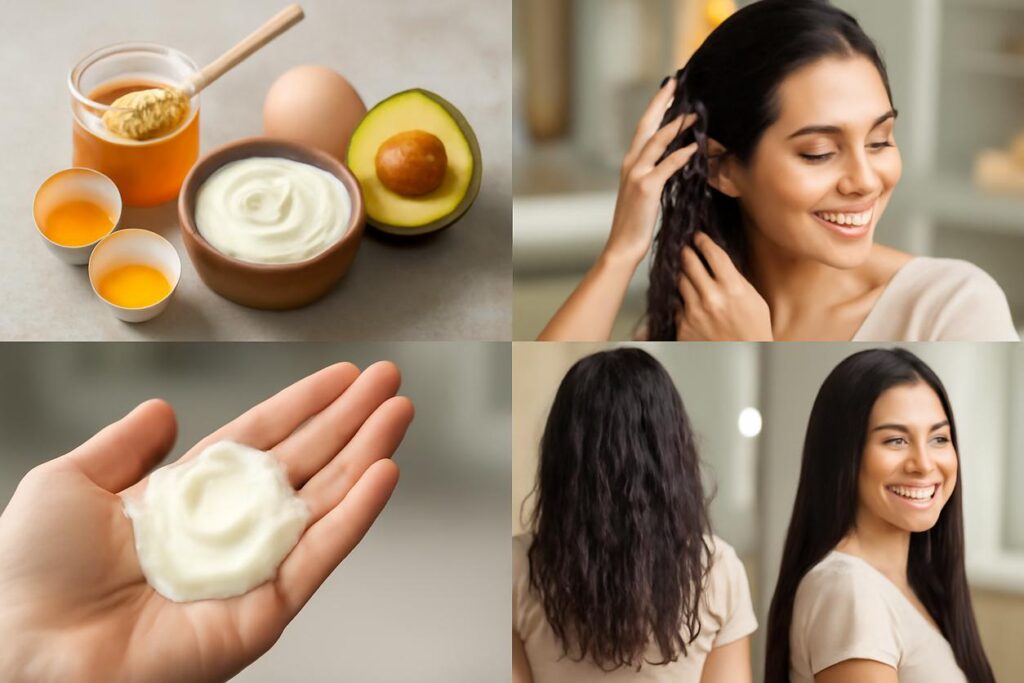Table of Contents
- Decoding your curl pattern and why it matters
- A daily micro-routine for hydrated curls
- Weekly care rituals to strengthen strands
- Nutrition that supports curl health
- Simple DIY masks and ingredient safety
- Styling without causing damage
- Seasonal adjustments and travel tips
- Troubleshooting common problems (frizz, shrinkage, breakage)
- How to read labels and pick product types
- Mythbusting and facts to trust
- Quick checklists and a 7-day sample routine
Decoding your curl pattern and why it matters
Welcome to the ultimate guide of curly hair tips for 2025 and beyond! Embracing your natural texture is a rewarding journey, but it starts with understanding what your hair truly needs. The first step is to identify your unique hair characteristics, which go far beyond just how coily your strands are. Knowing your curl pattern, porosity, and density helps you choose the right techniques and products, transforming your routine from guesswork to a science.
Curl patterns are typically categorized using a number-and-letter system:
- Type 2 (Wavy): This hair has a bendable, S-shaped pattern. 2a is a fine, barely-there wave, 2b is flatter at the roots with more defined waves from the mid-lengths, and 2c has thicker, more pronounced S-shaped waves starting from the root.
- Type 3 (Curly): This category features well-defined, springy curls. 3a curls are large, loose spirals, 3b curls are springier ringlets about the size of a marker, and 3c curls are tight, corkscrew-like strands.
- Type 4 (Coily/Kinky): This hair is characterized by tightly packed coils. 4a has dense, S-patterned coils, 4b features a Z-pattern with sharp angles, and 4c has the tightest coils with less definition and significant shrinkage.
While this system is a helpful starting point, remember that most people have multiple curl patterns on their head. The real magic happens when you combine this knowledge with an understanding of your hair’s other properties.
Porosity, density and elasticity — quick tests
Beyond the shape of your strands, three key factors dictate how your hair behaves: porosity, density, and elasticity. These characteristics are even more important than your curl pattern for building an effective routine. Here are some simple at-home curly hair tips to figure them out.
- Porosity: This is your hair’s ability to absorb and retain moisture. A great resource for general hair care is the hair porosity guide which offers foundational knowledge.
- Low Porosity: The cuticle is tightly packed. Hair takes a long time to get wet and a long time to dry. It’s prone to product build-up because products tend to sit on top of the hair.
- Medium Porosity: The cuticle is looser, allowing moisture to penetrate and be retained easily. This is often considered the “ideal” porosity.
- High Porosity: The cuticle has gaps or holes, so it absorbs moisture quickly but also loses it just as fast. This hair type is often prone to frizz and dryness.
Quick Test: Spray a small section of clean, dry hair with a water bottle. If the water beads up and sits on top, you likely have low porosity. If it absorbs quickly, you have high porosity. If it absorbs at a moderate pace, you have medium porosity.
- Density: This refers to how many individual hair strands are packed together on your scalp.
Quick Test: On dry, loose hair, look at your scalp in the mirror. If you can easily see your scalp, you have low density. If you can see some scalp, you have medium density. If you can barely see your scalp at all, you have high density.
- Elasticity: This measures the “stretchiness” of your hair. Healthy hair has good elasticity.
Quick Test: Take a single strand of shed, wet hair. Gently stretch it. If it stretches and bounces back to its original length, you have high elasticity. If it stretches but doesn’t fully return, you have medium elasticity. If it snaps almost immediately, you have low elasticity and may need to focus on moisture and gentle handling.
A daily micro-routine for hydrated curls
Great curls aren’t made on wash day alone. A consistent, gentle daily routine is one of the most crucial curly hair tips to maintain moisture and definition. This doesn’t mean spending hours on your hair each morning. Instead, focus on two key areas: refreshing and protecting.
To refresh, lightly mist your hair with water or a water-based leave-in conditioner to reactivate the products from your wash day. Gently scrunch or smooth the curls back into shape. For protection, especially overnight, friction is the enemy. Sleeping on a satin or silk pillowcase or wearing your hair in a loose “pineapple” ponytail on top of your head with a satin scrunchie can drastically reduce frizz and tangles.
Co-washing, cleansing cadence and product layering
How you wash your hair sets the foundation for everything else. Many people with curly hair benefit from reducing the use of traditional shampoos that contain harsh sulfates, which can strip natural oils.
- Co-washing: This means washing your hair only with a cleansing conditioner. It’s a gentle method ideal for those with very dry or coarse hair. However, it’s important to use a clarifying shampoo occasionally to remove build-up.
- Cleansing Cadence: There’s no one-size-fits-all answer for how often to wash. Type 2 waves might need washing every 2-3 days, while Type 4 coils might go a week or longer. Listen to your scalp and hair. If it feels greasy, itchy, or weighed down, it’s time to cleanse.
- Product Layering: The order in which you apply products matters. A common technique is the LOC (Liquid, Oil, Cream) or LCO (Liquid, Cream, Oil) method. After cleansing and conditioning, you apply a water-based product (liquid/leave-in), followed by a cream to hydrate, and an oil to seal in the moisture. Experiment to see which order your hair prefers.
Weekly care rituals to strengthen strands
Think of your weekly routine as a dedicated spa day for your hair. This is your chance to provide deep nourishment and prevent damage before it starts. The cornerstone of this ritual is a deep conditioner or hair mask. After cleansing, apply a generous amount of a treatment, cover your hair with a shower cap to trap heat and help the product penetrate, and leave it on for 20-30 minutes before rinsing.
Gentle detangling and protective styling options
Detangling is a major source of breakage for curly hair if done incorrectly. The golden rule is to never detangle dry hair. The best time is when your hair is saturated with conditioner, which provides slip. Use your fingers first to gently separate large knots, then follow with a wide-tooth comb, starting from the ends and working your way up to the roots.
Protective styling gives your hair a break from daily manipulation. These styles keep your ends tucked away, protecting them from friction and environmental damage. Simple options include:
- Two-strand twists
- Braids (box braids, cornrows)
- Buns or updos
- Flat twists
Nutrition that supports curl health
Healthy hair starts from within. While products and techniques are vital, the nutrients you consume play a fundamental role in the strength, growth, and overall health of your hair follicles. A balanced diet rich in specific vitamins and minerals is one of the most overlooked curly hair tips.
Key vitamins, proteins and food sources
Your hair is primarily made of a protein called keratin. To build strong keratin, your body needs a variety of nutrients. As highlighted in studies on the subject, there is a clear link between nutritional deficiencies and hair health. You can explore more on this in nutrition and hair research. Focus on incorporating these into your diet:
| Nutrient | Role in Hair Health | Food Sources |
|---|---|---|
| Protein | The fundamental building block of hair. | Eggs, lean meats, fish, beans, lentils, tofu. |
| Iron | Helps red blood cells carry oxygen to your follicles. | Spinach, red meat, lentils, chickpeas. |
| Vitamin C | Aids in iron absorption and collagen production. | Citrus fruits, strawberries, bell peppers, broccoli. |
| Omega-3 Fatty Acids | Provide oils that hydrate the scalp and hair. | Salmon, mackerel, avocados, walnuts, chia seeds. |
| Biotin (Vitamin B7) | Assists in keratin production. | Eggs, almonds, sweet potatoes, onions. |
| Zinc | Plays a role in hair tissue growth and repair. | Oysters, beef, pumpkin seeds, lentils. |
Simple DIY masks and ingredient safety
You don’t always need to look far for effective treatments; your kitchen can be a great source of nourishing ingredients for your curls. DIY masks are a fantastic way to give your hair a natural boost. For moisture, try mashing half an avocado with a tablespoon of honey. For a protein boost, an egg mixed with plain yogurt can help strengthen strands. Always use fresh ingredients and apply to clean, damp hair.
How to test a DIY mask before full use
Before applying any new concoction to your entire head, it’s crucial to perform two tests to prevent adverse reactions:
- Patch Test: Apply a small amount of the mixture to a discreet area of your skin, like behind your ear or on your inner elbow. Wait 24 hours to see if any irritation, redness, or itching occurs.
- Strand Test: Apply the mask to a small, hidden section of your hair. This lets you see how your hair reacts to the ingredients before you commit to a full application.
Styling without causing damage
One of the best curly hair tips for long-term health is to minimize or eliminate the use of high heat from tools like flat irons and curling wands. Heat can permanently damage your curl pattern and lead to extreme dryness and breakage. Thankfully, there are many ways to achieve beautiful styles without it.
Heat-free methods for definition and hold
- Plopping: After applying your styling products to wet hair, you can “plop” your hair into a cotton t-shirt or microfiber towel. This encourages curl clumps to form and reduces frizz without the harshness of a traditional towel.
- Finger Coiling: For extra definition, take small sections of your hair and wrap them around your finger to create a perfect coil.
- Flexi-Rods or Rollers: These tools can be used on damp hair to create uniform curls and stretched styles. Allow your hair to air dry completely before removing them.
- Braid-outs and Twist-outs: Braiding or twisting your hair while damp and allowing it to dry will create a defined, wavy or coily pattern once undone.
Seasonal adjustments and travel tips
Your curls are affected by the environment, so your routine should adapt to the seasons. In humid summer months, you might want to use lighter products and consider anti-humectants to fight frizz. In the dry winter, focus on heavier creams, oils, and regular deep conditioning treatments to combat moisture loss. When traveling, downsize your favorite products into travel-sized containers. A simple, reliable style like a bun or a few twists can be a lifesaver on the go.
Troubleshooting common problems (frizz, shrinkage, breakage)
Every person with curly hair has faced these common challenges. Here are some quick curly hair tips to manage them:
- Frizz: Frizz is often a cry for moisture. Ensure your hair is properly hydrated with leave-in conditioners and deep treatments. Also, avoid touching your hair while it’s drying, as this can disrupt the curl pattern and create frizz.
- Shrinkage: Shrinkage is a sign of healthy, elastic hair! It shows your curls can bounce back. If you want to show off your length, try stretched styles like braid-outs or use banding techniques on damp hair.
- Breakage: This can be caused by dryness, rough handling, or a lack of protein. Research into the hair’s structure shows that a compromised cuticle layer is a key factor. You can learn more about this from a hair breakage and structure study. To combat it, focus on gentle detangling, maintaining a good moisture-protein balance, and getting regular trims to remove split ends.
How to read labels and pick product types
The product aisle can be overwhelming. Learning to read ingredient lists empowers you to make informed choices. Generally, look for products where water (aqua) is the first ingredient, as this indicates it is moisturizing. Other beneficial ingredients include natural butters (shea, mango), oils (coconut, jojoba, argan), and humectants like glycerin or honey that draw moisture into the hair. Many people with curly hair choose to avoid:
- Sulfates: Harsh detergents (like sodium lauryl sulfate) that can strip natural oils.
- Certain Alcohols: Drying alcohols like alcohol denat can be dehydrating. Fatty alcohols (like cetyl alcohol) are actually good for hair.
- Silicones: These can create a waterproof coating that gives the illusion of shine but prevents moisture from entering the hair shaft, leading to build-up.
Mythbusting and facts to trust
Misinformation can sabotage your hair journey. Let’s clear up a few common myths with some trustworthy curly hair tips.
- Myth: You should never brush curly hair.
- Fact: You should never brush dry curly hair. Brushing or combing wet hair saturated with conditioner is the best way to detangle without causing breakage.
- Myth: Oils moisturize your hair.
- Fact: Oils are excellent at sealing in moisture, but they don’t provide it themselves. True moisture comes from water or water-based products. Always apply oil as a final step to lock in hydration.
- Myth: You must follow a specific curly method perfectly.
- Fact: Your hair is unique. While popular methods provide a great framework, the best routine is one that is personalized to your hair’s porosity, density, and lifestyle. Don’t be afraid to experiment and adapt.
Quick checklists and a 7-day sample routine
To make things easier, here are some simple checklists and a sample routine. Remember, this is just a template—adjust it to fit your hair’s needs.
Care Checklists:
- Daily: Protect hair while sleeping, lightly refresh curls with water.
- Weekly: Deep condition or do a treatment, detangle gently.
- Monthly/As Needed: Use a clarifying shampoo to remove build-up, trim ends to prevent splits.
Sample 7-Day Routine:
| Day | Action | Details |
|---|---|---|
| Day 1 | Wash Day | Cleanse, condition, deep condition (if needed), apply leave-in and stylers to wet hair. Plop or air dry. |
| Day 2 | Refresh | Lightly mist with water to reactivate products. Gently scrunch. Protect hair at night. |
| Day 3 | Refresh or Style | Refresh again. If curls are losing shape, consider a half-up style or a loose bun. |
| Day 4 | Rest Day | Put hair in a loose protective style like a braid or high bun to minimize manipulation. |
| Day 5 | Scalp Care | Give yourself a gentle scalp massage with your fingertips to stimulate blood flow. |
| Day 6 | Rest Day | Another day in a protective style. Your curls get a break before the next wash day. |
| Day 7 | Prep | Decide if tomorrow is wash day. If so, you could do a pre-poo treatment with an oil overnight. |
Caring for curly hair is a journey of discovery. By understanding your hair’s unique properties and consistently applying these curly hair tips, you can build a sustainable routine that lets your natural texture thrive. Be patient, be gentle, and have fun with it!





